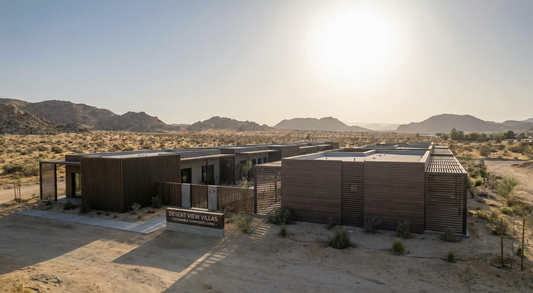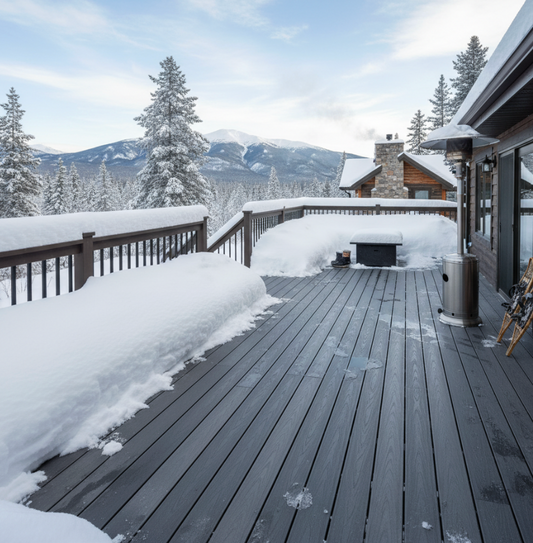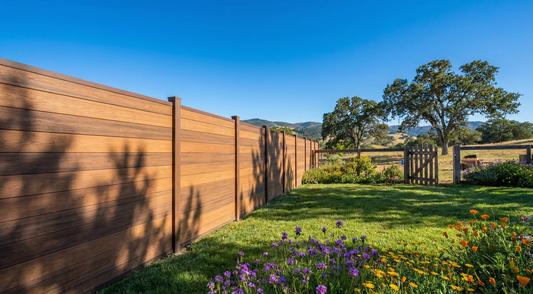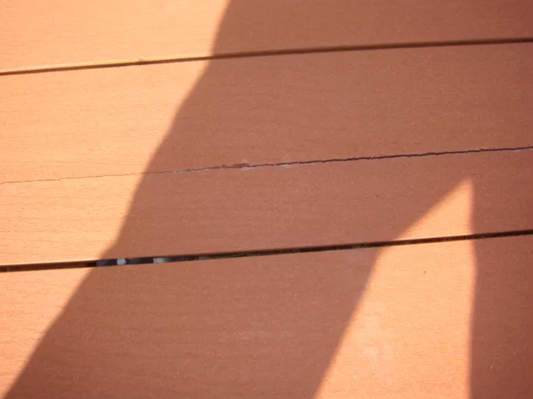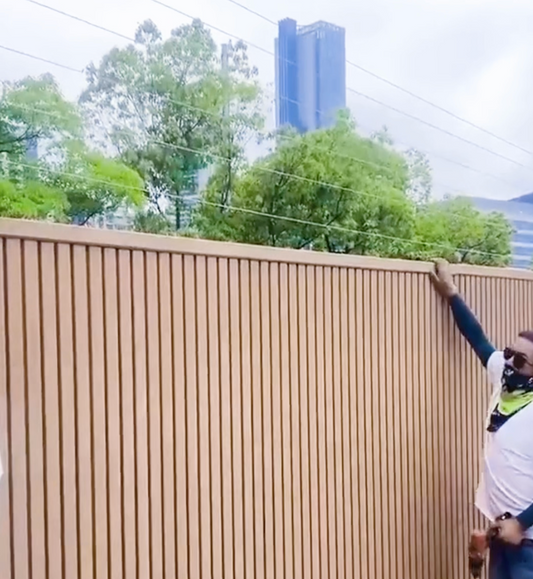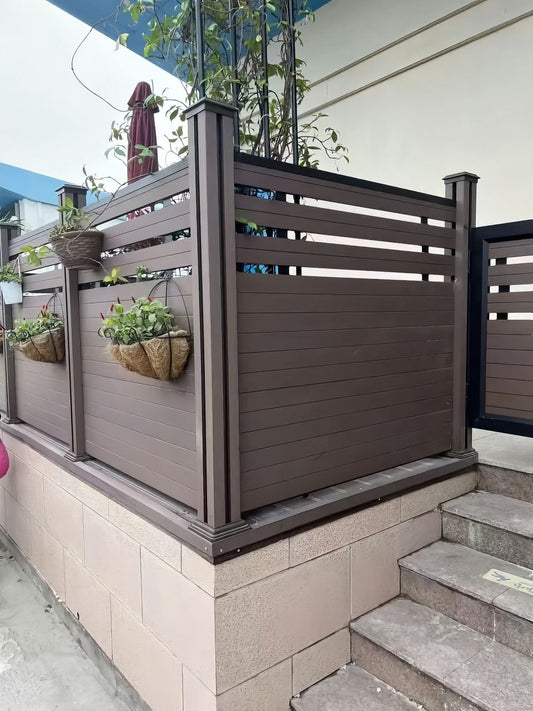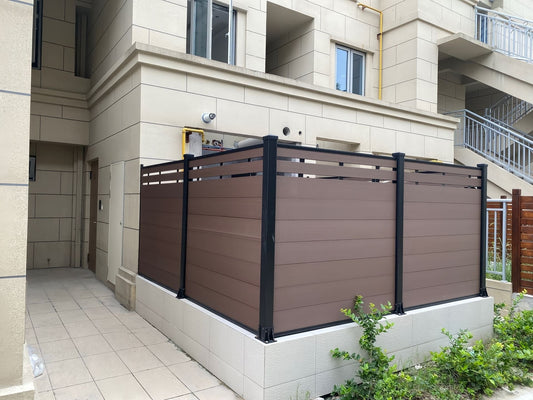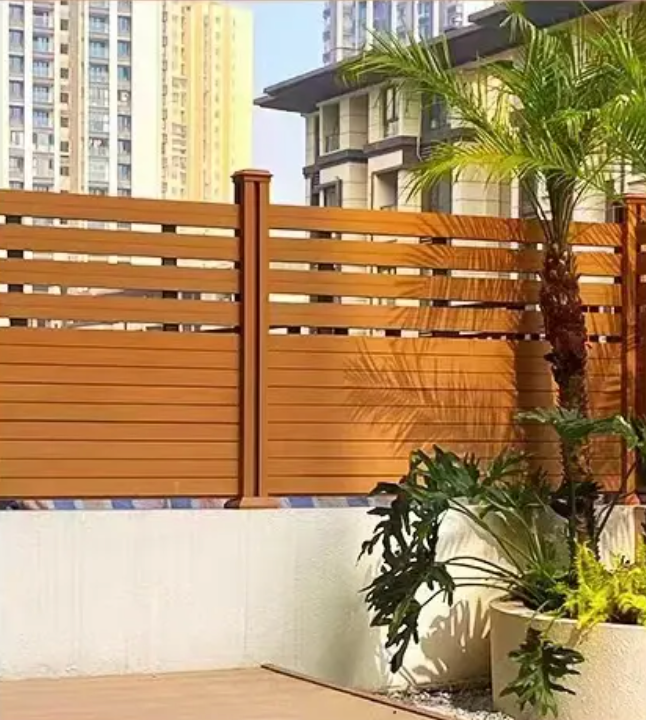
Is Composite Fencing Worth the Investment? A Full Cost Breakdown
Introduction: Rethinking the Cost of Fencing
When it comes to choosing a new fence for your home or property, price is often the first thing people consider. But the initial cost is only part of the equation. In recent years, composite fencing—also known as WPC (Wood Plastic Composite) fencing—has become a popular alternative to wood and vinyl thanks to its durability, low maintenance, and sleek modern look.
So, is composite fencing worth the investment? In this blog, we break down the costs—upfront and long-term—to help you make a smart, informed decision.

1. What Is Composite Fencing?
Composite fencing is made from a blend of recycled wood fibers and plastic polymers, engineered to combine the aesthetic of wood with the durability of plastic. It's designed to resist weather, pests, fading, and warping, making it a go-to choice for homeowners who want long-term value with minimal maintenance.
Benefits of Composite Fencing:
-
Natural wood-like texture and color options
-
Fade- and stain-resistant
-
Won’t crack, rot, warp, or splinter
-
Requires no painting or sealing
-
Environmentally friendly materials
2. Upfront Cost: Composite vs. Wood vs. Vinyl
Let’s start by comparing the initial investment required for different fencing materials per linear foot (average U.S. market pricing as of 2025):
While composite fencing has the highest upfront cost, it's essential to look beyond that and consider long-term expenses and benefits.
3. Maintenance Cost Over Time
Traditional wood fencing requires regular maintenance—such as staining, sealing, or repainting—every 1–2 years. Composite fencing, on the other hand, is virtually maintenance-free.
10-Year Maintenance Cost Estimate (per 100 linear feet):
| Fencing Material | Annual Maintenance Tasks | 10-Year Cost Estimate |
|---|---|---|
| Wood | Staining, sealing, repairs | $1,200–$2,000+ |
| Vinyl | Cleaning, occasional repair | $300–$600 |
| Composite | Occasional rinsing only | <$200 |
Composite fencing typically needs nothing more than occasional cleaning with soap and water to keep it looking new. That means no repainting, no sanding, no water damage repairs.
4. Durability and Lifespan
Longevity is where composite fencing really shines.
| Fencing Type | Average Lifespan | Common Issues |
|---|---|---|
| Wood | 10–15 years | Rot, termites, cracking, warping |
| Vinyl | 15–20 years | Fading, brittleness, cracking |
| Composite | 25–35 years | Minimal issues when properly installed |
With a lifespan of up to 35 years, composite fencing offers a superior return on investment—especially when you factor in reduced maintenance and repairs.
5. Return on Investment (ROI)
Though the upfront price tag is higher, composite fencing’s long-term durability means fewer replacements, repairs, and maintenance hours. For homeowners planning to stay in their property long-term, this can add up to thousands of dollars in savings over the fence’s life.
Key ROI Benefits:
-
Lower lifetime maintenance costs
-
Increased curb appeal and property value
-
Longer replacement cycles (less disruption)
-
Greater resistance to weather and pests
In real terms, many homeowners find that composite fencing pays for itself within 10–15 years, while continuing to deliver value for another 10+ years after that.
6. Environmental Considerations
Composite fencing is a more sustainable option than both vinyl and wood. It uses recycled materials and reduces the need for chemical treatments like wood preservatives or paint.
Sustainability Highlights:
-
Made from 95% recycled materials
-
Reduces landfill waste
-
Doesn’t leach toxic chemicals into soil
-
Long lifespan means fewer replacements
Choosing composite fencing isn’t just a financial decision—it’s also a step toward responsible, eco-conscious living.
7. Aesthetic and Design Flexibility
Modern composite fencing comes in a variety of textures, finishes, and colors, allowing homeowners to match their fence with any architectural style.
Design Advantages:
-
Wood-grain texture for a natural look
-
Modern solid colors like charcoal, mocha, ash grey
-
Modular systems for custom height, privacy, and layout
-
Consistent appearance over time—no fading or discoloration
A beautiful fence not only frames your outdoor space but can significantly boost curb appeal and resale value.
8. Is Composite Fencing Right for You?
Composite fencing is ideal if you:
-
Plan to stay in your home long-term
-
Want a low-maintenance, hassle-free option
-
Live in an area with harsh weather (sun, rain, snow)
-
Care about environmental impact
-
Value durability and modern aesthetics
It may not be for you if:
-
You have a tight upfront budget and need short-term solutions
-
You're renting or planning to move soon

9. Final Verdict: Is It Worth It?
If you’re looking for a fence that:
-
Lasts 2–3x longer than wood
-
Costs less to maintain over time
-
Looks great for decades
-
And adds value to your property...
Then composite fencing is absolutely worth the investment.
While the upfront cost may be higher, the savings in maintenance, replacements, and repairs, combined with exceptional durability and sustainability, make it one of the smartest choices for modern homeowners today.
Ready to Invest in a Fence That Lasts?
At [Your Brand Name], we offer a wide range of high-quality composite fencing styles and colors designed to meet your needs. Whether you're upgrading your backyard or fencing a new development, we’ve got you covered.
👉 Explore our composite fencing collection now
👉 Request a free quote today
